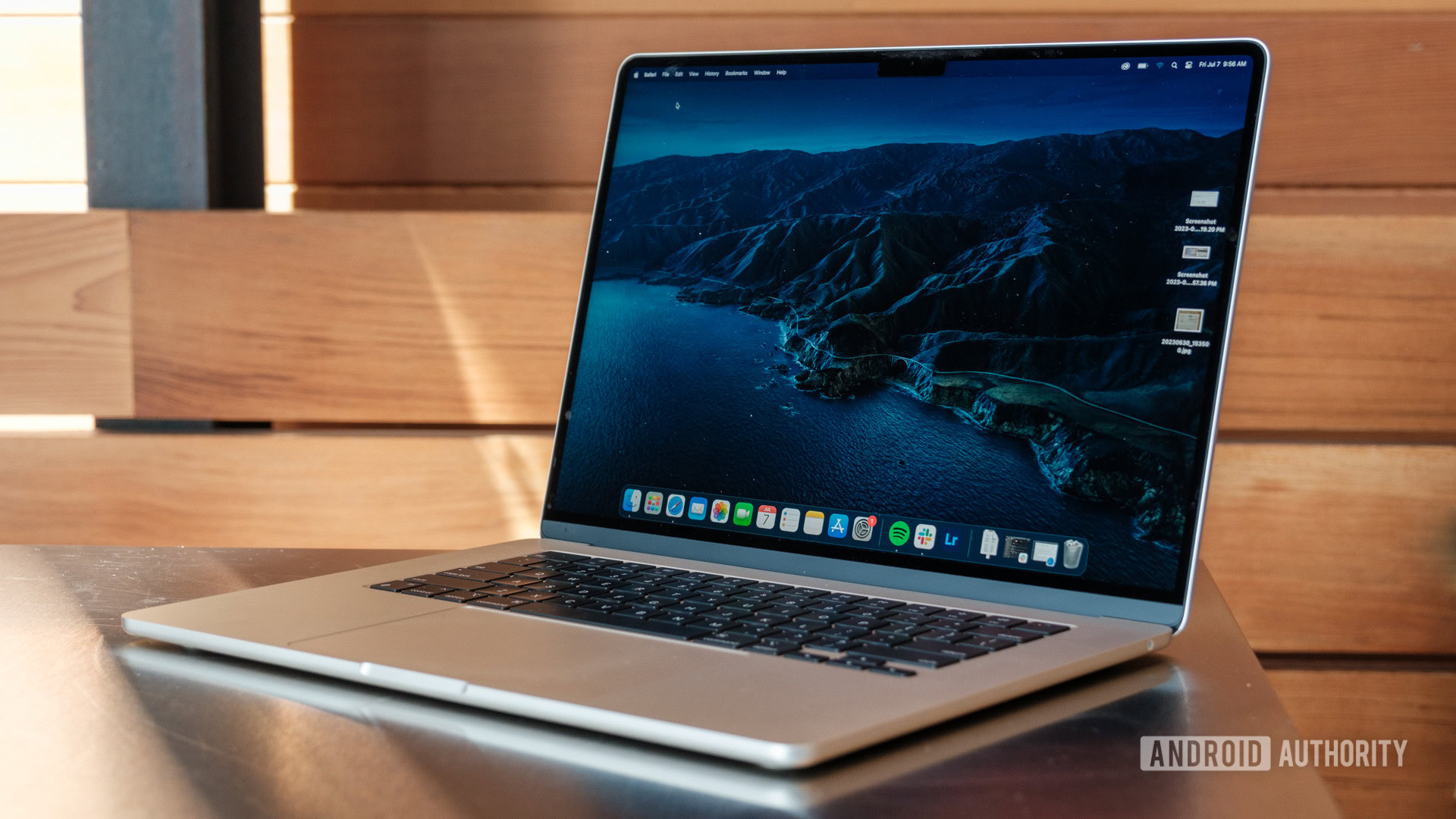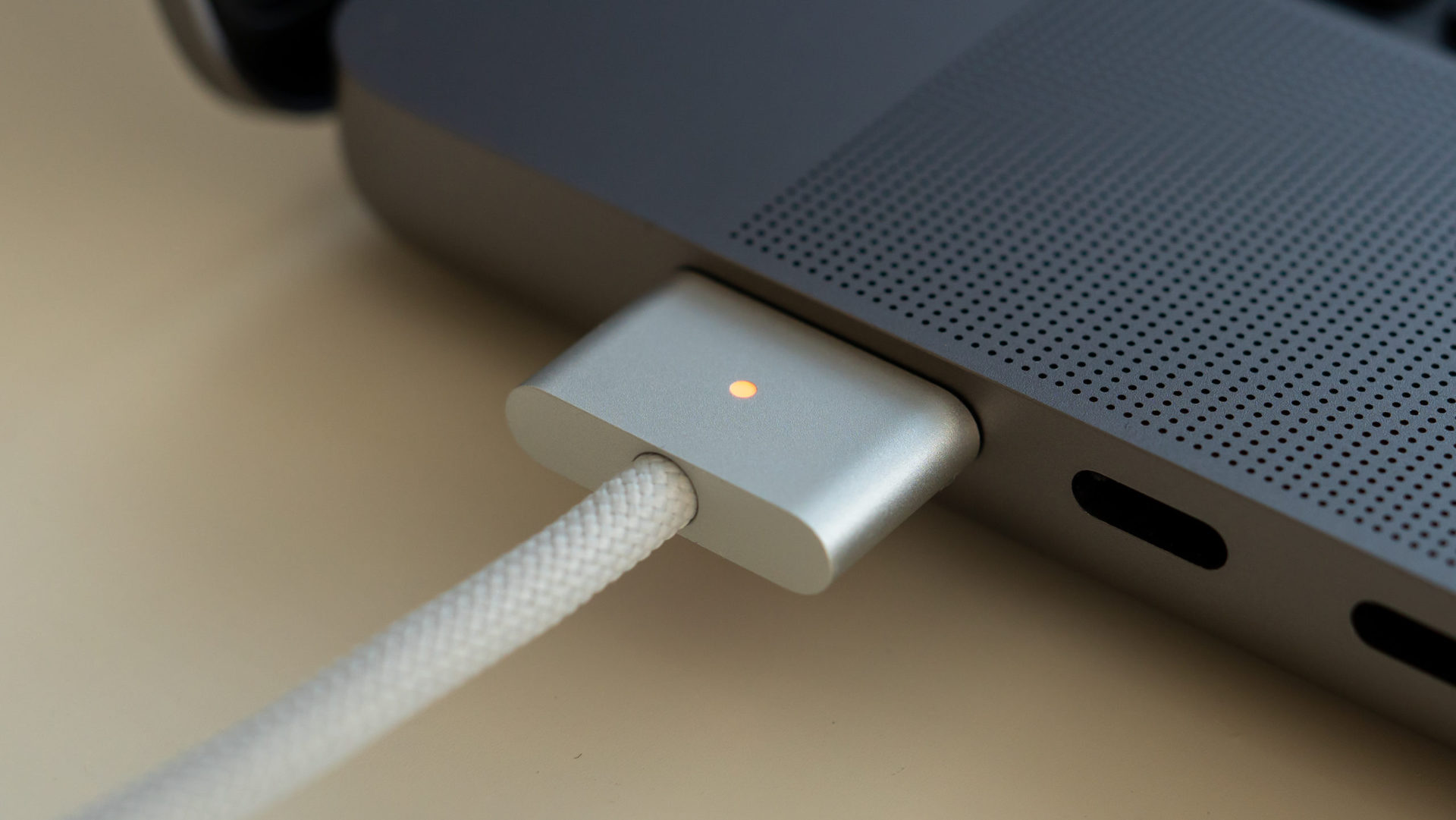Affiliate links on Android Authority may earn us a commission. Learn more.
How long does a MacBook battery last?
Published onFebruary 4, 2025

Apple is no stranger to criticism regarding battery life on its devices. Historically, the iPhone battery life has been weak, though things have improved. But what about Apple’s laptops? How long does a MacBook battery last? Let’s take a look.
QUICK ANSWER
Apple’s M1, M2, M3, and M4 MacBooks offer up to 18-24 hours of battery life between charges. The amount of time greatly depends on how you use your laptop and its specific model.
JUMP TO KEY SECTIONS
How long does a MacBook battery last in its lifetime?

Like everything in life, MacBook batteries are not immortal and will eventually die. As somber as that may seem, the good news is that the lifespan of today’s MacBook batteries is rather long.
All modern MacBook batteries in M-series models have a life cycle of 1,000 charges. That number hasn’t changed much over the past decade and is consistent with the best laptops you can buy. However, the amount of time between charges certainly has. With an Apple MacBook Pro in 2013, you could expect nine hours of wireless web surfing. Today, the number has more than doubled.
A MacBook battery has a life cycle of 1,000 charges.
In real-world use, if you use your MacBook for six hours a day for standard tasks and only need to charge it every other day, then you can expect your battery to last around five years. Heavy users who charge their MacBooks daily would have around two and half years of use before hitting the 1,000 charge lifecycle. This means the average MacBook has a similar lifespan to the average laptop.
When you hit 1,000 charges, your battery doesn’t stop working, though you will likely see a drop off in how long it lasts between charges. There are ways to find out if your battery needs replacing, which we’ll touch on shortly.
How long does a MacBook battery last on a single charge?

There’s no single answer to this question, as it depends on how you use your MacBook. Someone editing video on Final Cut Pro won’t enjoy as much battery life as someone casually browsing the web.
The answer also depends on which MacBook you’re using. Below is a table of Apple’s recent MacBooks featuring an Apple silicone M1 or M2 processing chip.
| Model | Battery life per charge |
|---|---|
MacBook Air (M1, 2020) | Up to 18 hours |
MacBook Pro (13-inch, M1, 2020) | Up to 20 hours |
MacBook Air (M2, 2022) | Up to 18 hours |
MacBook Pro (13-inch, M2, 2022) | Up to 20 hours |
MacBook Pro (16-inch M2, 2023) | Up to 22 hours |
MacBook Air (15-inch, M2, 2023) | Up to 18 hours |
MacBook Pro (14-inch, M3, 2023) | Up to 22 hours |
MacBook Pro (16-inch, M3, 2023) | Up to 22 hours |
MacBook Air (13-inch, M3, 2024) | Up to 18 hours |
MacBook Air (15-inch, M3, 2024) | Up to 18 hours |
MacBook Pro (14-inch, M4, 2024) | Up to 24 hours |
MacBook Pro (14-inch, M4 Pro or Max, 2024) | Up to 22 hours |
MacBook Pro (16-inch, M4 Pro or Max, 2024) | Up to 24 hours |
MacBook Air (13-inch, M4, 2025) | Up to 18 hours |
MacBook Air (15-inch, M4, 2025) | Up to 18 hours |
Is Apple telling the truth about battery life?
Those figures are from Apple’s official spec sheet, but how do they compare to reality? Again, it depends.
During our latest tests, we never really got the 13-inch MacBook Air M2 to last 18 hours and averaged more like 10-12. We got the same results from the M2 Pro MacBook Pro. The 15-inch MacBook Air lasted us about six hours. None of this is to say that Apple intentionally misled customers with its MacBook battery life specs. The company will have its own way of testing benchmarks, and sharing the best outcomes is common sense.
Alternatively, Apple tends to be somewhat conservative if you look at battery estimates for its other products. It claims the Apple Watch Ultra lasts up to 36 hours on a single charge, but we regularly crossed the 40-hour mark in our review.
How to make your MacBook battery last longer
There are several easy and basic ways to make your MacBook battery last longer. Switching on Low Power Mode on macOS helps slow down battery drainage, but there’s a trade-off.

Low Power Mode reduces performance by slowing down the CPU and minimizing the use of RAM to boost battery power. These changes may not be noticeable when using your MacBook for light tasks. However, you’ll feel a difference for heavy-duty tasks like video editing.
Other ways to extend your battery life include dimming your screen brightness, turning off the backlights on your keyboard, and shutting down any apps you’re not using so they don’t run in the background.
Also, it is commonly said that using Apple’s own apps will save you battery, as the company better optimizes its software to work on these devices. So, you might want to try using Safari instead of Chrome, Final Cut Pro instead of Adobe Premiere, and so on.
Can you replace a MacBook battery?
Over time, your battery will not perform as well as it did the day you purchased it. This means less battery life between charges. Thankfully, you can replace your battery, though it’s not cheap.
Replacing a MacBook battery directly through Apple costs in the region of $200 to $300. Of course, costs vary depending on what MacBook model you own. Here’s our guide for MacBook battery replacement prices, if you want more details.
When should I replace my MacBook Battery?
macOS can analyze the performance of your battery and tell you when it’s time to get a replacement. Take the following steps to find out the current status of your battery health.
- Navigate to the Apple menu in the top left corner of your screen.
- Select About This Mac.
- Next, select More Info…
- Scroll down and select System Report…
- In the left-hand menu, find and select Power.
- Beneath Health Information, you will see Cycle Count, Condition, and Maximum Capacity. If your battery is alive and well, the condition should be “Normal.” It will say “Service Battery” if it needs replacing.
FAQs
Out of all the M-series MacBooks, the ones with the best battery are the 14-inch MacBook Pro with M4 and the 16-inch MacBook Pro with M4 Pro or Max. Both of these are estimated to last up to 24 hours per charge.
Even the MacBooks with the worst battery life have a pretty good one at up to 18 hours. These are pretty much all M-series MacBook Airs.